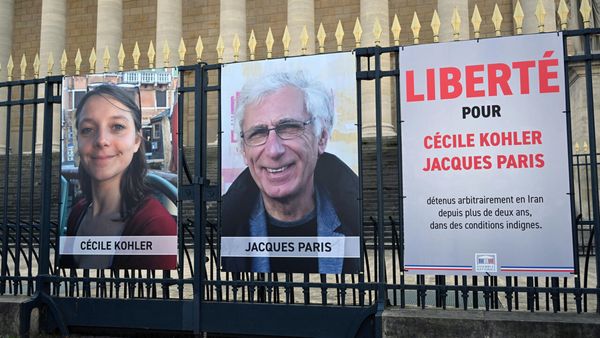
Krzysztof Piesiewicz, screenwriter
After the fall of the Berlin Wall, with liberty seemingly on the horizon, I had gone to the Polish director Krzysztof Kieślowski with the idea of making a trilogy about the three ideals of the French revolution: liberty, equality and fraternity. Each were to be represented by the three colours of the French flag: red, white and blue. Fraternity, the theme of the final film Red, is a complex issue.
For the script, I included references to some of my idols, including the writer Albert Camus. One of my favourite books of his is The Fall, and Joseph – the retired judge whose dog gets run over in Red – is partly based on the book’s young judge. As for his eavesdropping, Krzysztof had come back from Japan with one of the first cordless phones. When we plugged it in, somehow we could hear the neighbours on the first floor.
There was a lengthy casting process for the role of Valentine, the model who confronts the judge whose dog she hit. But Irène Jacob, who we had worked with on The Double Life of Véronique, was the best candidate. On the shoot in Geneva, I had a feeling that something important was happening, but it was in the editing room afterwards that Krzysztof’s genius came into its own.
I think the trilogy is even more relevant today. The EU is a beautiful project: I was very sad when the UK left. The great challenge it faces over the coming decades is how to balance freedom and justice. I feel society is at a turning point. I don’t think a piece of art can directly influence politics, but it can influence the minds of its audience. And if enough are responsive to what you’re trying to communicate, there’s a chance that your message will hit a critical mass – and change can begin.

Irène Jacob, played Valentine
While we were making The Double Life of Véronique, Krzysztof had asked me questions to get to know me. One was: “What makes you angry?” Red was really about this: you meet someone, such as the judge, who revolts you – in this case, because he was wiretapping his neighbours – but you confront it. The film is a clash between hope and experience, about how two apparently different people can connect on a deep level.
As an actor, my work was to know why my character returns to someone who provokes her so much. Krzysztof often asked his team for a lot of input into his films. I suggested that things were not so good in Valentine’s life: she has this boyfriend abroad and a brother with drug problems. It helped develop the character.
Krzysztof liked to call me Little Kangaroo. Like in Chekhov’s plays, everybody has a nickname in Poland. I think it was a reference to my inexperience – my eyes were very round and I had this constantly surprised look. He asked me: “What was the name you wanted to have when you were a child?” When I told him Valentine, that became the character’s name.
We shot in Geneva, my home town, which helped connect me to this feeling of being a child. We spent the first three weeks doing all the scenes in the judge’s house. Jean-Louis Trintignant, who played the judge, hadn’t wanted to do the film, because he was tired and had a leg problem. That’s why he has a walking stick. The two of us had to rehearse our stances: we are never seen sitting or standing at the same level. Krzysztof would kneel beside the camera and look at us like he was watching a ping-pong match, as the incisive dialogue went back and forth, with one of us seizing an advantage and winning the exchange.
Krzysztof and his cinematographer, Piotr Sobociński, were trying to find new ways of conveying feelings with the camera. The first shot, the crane shot that rises into the building and sees Valentine on the phone, gives an immediate sense of intrusiveness. And the film’s chiaroscuro lighting has such presence, it’s like having another actor in the cast. Piotr is co-credited for the script, which illustrates how much the camera contributed.
Krzysztof never said at the time that Red was going to be his last film, but once it was done, he said he was finished directing. He had shot three films one after the other: he was editing White and Blue as he was filming Red. He had been under a lot of pressure. He had started writing another trilogy with Piesiewicz, thinking he might give it to another director. But he had said that for his Dekalog TV series – and ended up doing all 10 episodes himself. Had he not died during heart surgery two years later, who knows what might have happened?
The remastered Three Colours trilogy is out now.







